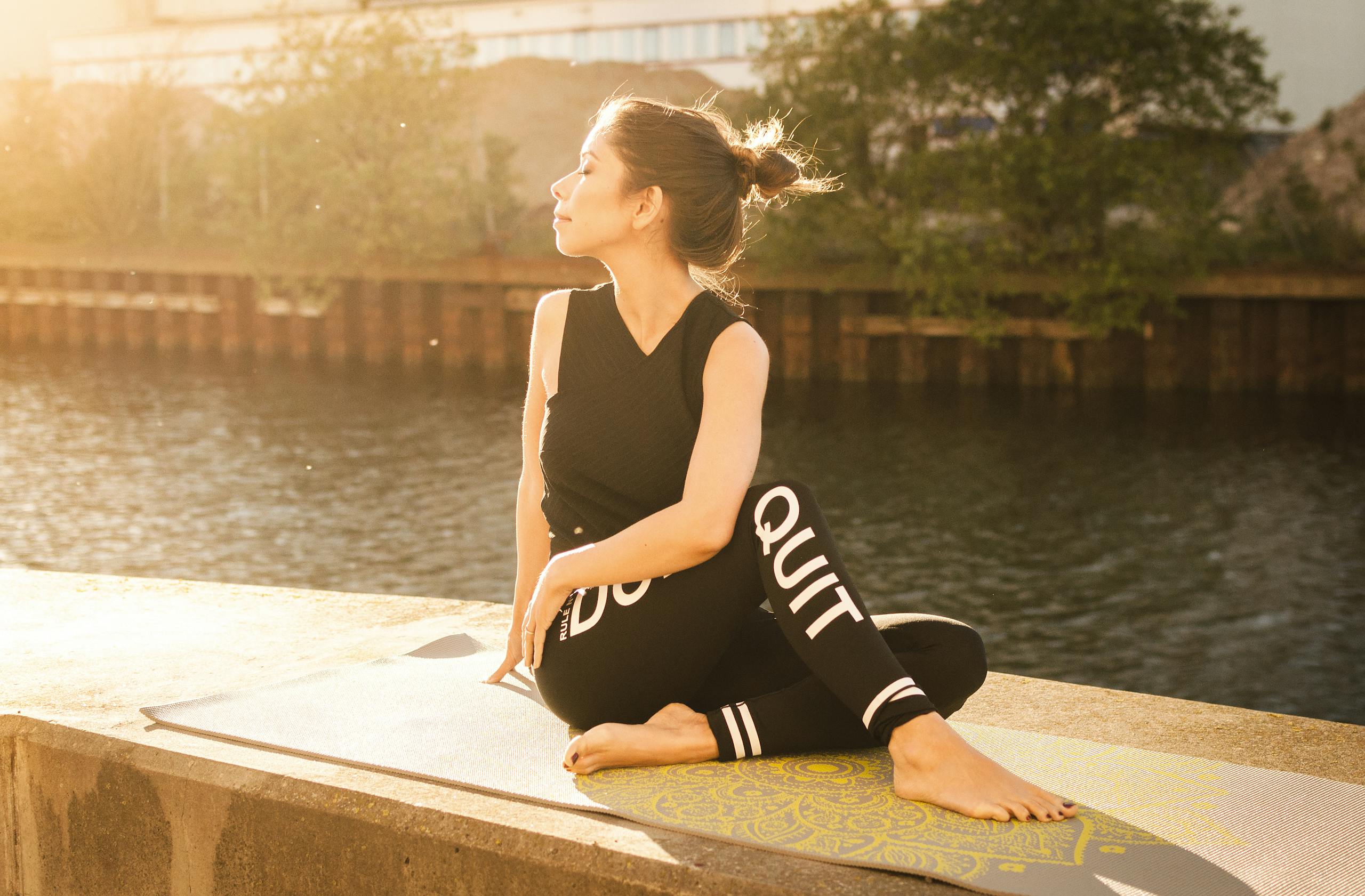Yoga vs. Structured Exercise: What’s Really Best for Your Arteries?

When people think of yoga, they often picture calm breathing, mindful stretches, and better health. While yoga definitely has benefits, new research suggests that when it comes to vascular health—the health of your blood vessels—it may not be as powerful as other types of structured exercise. A detailed study published in Advances in Integrative Medicine carefully compared yoga to other exercise routines and revealed some eye-opening results.
What the Researchers Looked At
The study was designed to answer a very specific question: how does yoga stack up against more structured forms of exercise when it comes to improving vascular function in sedentary adults? To do this, the researchers conducted a systematic review, which means they didn’t just run a single experiment but instead examined a wide range of existing studies.
They reviewed randomized controlled trials, crossover trials, and non-randomized studies, focusing only on those that used ultrasound measurements like flow-mediated dilation (FMD) or pulse wave velocity (PWV) to assess vascular function. These are reliable, noninvasive ways to evaluate how flexible and responsive blood vessels are—two critical factors in preventing cardiovascular diseases.
In total, 10 studies met the inclusion criteria. The participants in these studies were mainly sedentary adults, people who spend much of their time sitting and not engaging in regular exercise. This group is important to study because prolonged inactivity is known to cause stiffening of blood vessels, increased blood pressure, cholesterol buildup, and higher risks of clots, strokes, and heart attacks.
What Is Vascular Function, Anyway?
Before diving into the findings, it’s worth explaining what vascular function actually means. Think of your arteries and veins like flexible garden hoses. When they are healthy, they can expand and contract easily, delivering blood efficiently throughout the body. When they stiffen, blood flow becomes restricted, and the heart has to work harder. This stiffness is one of the early warning signs of cardiovascular problems.
Poor vascular function can contribute to hypertension, atherosclerosis, and heart disease. Regular movement and exercise help counteract this, keeping the “hoses” flexible and resilient. That’s why scientists and doctors are so interested in which types of exercise provide the strongest benefits.
Key Findings of the Review
The results were clear:
- Yoga showed benefits, but inconsistently. Some studies found that older adults in particular saw improvements in endothelial function (the ability of blood vessels to dilate), but the results were not the same across all age groups. Younger adults often showed little to no measurable benefit in vascular flexibility from yoga alone.
- Structured exercise performed better. Activities like aerobic workouts, resistance training, Tai Chi, Pilates, and high-intensity interval training (HIIT) were much more reliable in producing improvements. These types of exercise consistently increased blood vessel flexibility, improved blood flow, and reduced stiffness.
- Micro-breaks during sitting weren’t enough. A few studies looked at whether short breaks from sitting could make a difference. While they helped a little, they did not produce the same vascular benefits as regular structured workouts.
- Yoga is still useful, just not the strongest option. The researchers emphasized that yoga remains valuable, especially for older adults or people unable to handle high-intensity exercise. It can help with movement, balance, and relaxation, which are important for overall well-being. But if the main goal is stronger, healthier arteries, structured workouts are the better choice.
Why Structured Exercise Wins
So why is structured exercise more effective? The answer lies in how blood vessels respond to physical stress. When you perform activities like brisk walking, resistance training, or interval workouts, blood flows faster and creates shear stress against the artery walls. This stimulates the release of nitric oxide, a molecule that keeps blood vessels flexible and reduces inflammation.
Yoga, while excellent for stress reduction, breathing, and gentle movement, usually doesn’t push the cardiovascular system hard enough to create this level of stimulus. That’s why its effects on vascular function are less consistent and less robust.
The Numbers Behind the Problem
This research matters because of the sheer number of people affected. Globally, around 300 million people practice yoga, while more than 620 million people live with cardiovascular disease as of 2023. Knowing which forms of exercise provide the strongest protection can guide both individuals and healthcare providers in making better lifestyle recommendations.
Movement Is the Real Antidote
One strong takeaway from the research is that any movement is better than none. Prolonged sitting is described by health experts as “the new smoking.” It silently chips away at artery health by making them stiff and less responsive. Regular movement—even simple daily routines—can help your arteries “forget” the damage of sitting.
Structured workouts provide the most consistent improvements, but yoga can still be part of the picture. For people who enjoy yoga, the best approach may be to combine it with other forms of exercise. That way, you get the cardiovascular benefits of aerobic or resistance training, while still enjoying the flexibility, balance, and stress-relief yoga provides.
Yoga’s Cultural Role and Accessibility
It’s important not to dismiss yoga outright. For millions of people, yoga is accessible, culturally significant, and inclusive. It doesn’t require expensive equipment, and it can be adapted for people of all ages and fitness levels. In many communities, yoga is the easiest entry point into physical activity.
The study’s authors point out that public health campaigns should highlight yoga’s role but also encourage people to supplement yoga with other forms of exercise if the goal is cardiovascular health. For example, combining yoga with brisk walking or light strength training could provide a balanced, well-rounded routine.
Beyond the Study: Other Known Benefits of Yoga
Even though this research found yoga less effective for vascular health, yoga still offers a wide range of benefits:
- Stress management: Yoga helps regulate the autonomic nervous system, reducing stress hormones that can contribute to heart disease.
- Flexibility and balance: Especially important for older adults to prevent falls and maintain independence.
- Mental health: Yoga supports mindfulness, reducing anxiety and depression.
- Chronic pain relief: Certain yoga practices are shown to reduce back pain, arthritis discomfort, and other chronic pain conditions.
These benefits show that yoga can still play a meaningful role in overall health, even if it’s not the strongest option for vascular function.
Conventional Exercise and Vascular Health
On the other hand, let’s look more closely at the types of structured exercise that outperformed yoga in the review:
- Aerobic exercise: Activities like walking, running, cycling, or swimming consistently improve vascular flexibility and lower blood pressure.
- Resistance training: Weight lifting or bodyweight exercises strengthen not only muscles but also blood vessels.
- High-intensity interval training (HIIT): Alternating between bursts of intense effort and rest is one of the most effective ways to boost cardiovascular and metabolic health.
- Tai Chi and Pilates: These are low-impact but still provide measurable vascular benefits, making them good options for people seeking gentler workouts.
Each of these forms of exercise creates consistent improvements by directly challenging the cardiovascular system in ways yoga usually does not.
Where Does This Leave Us?
The conclusion is straightforward: structured exercise is more effective than yoga for vascular health. That doesn’t mean yoga is useless—it simply means it shouldn’t be the only form of exercise if your goal is to protect your arteries.
The best advice? Mix and match. Add yoga for its mental, physical, and cultural benefits, but also make room for workouts that push your heart and blood vessels a bit harder. This combination could offer the best of both worlds: resilient arteries and a calmer mind.
Final Thoughts
This research is particularly valuable because it highlights the need for clarity in public health messaging. Telling people that yoga alone will safeguard their arteries isn’t accurate. Instead, the message should be: movement is medicine, but the type of movement matters.
For the millions of people worldwide already practicing yoga, the solution is simple—keep doing it, but don’t stop there. Add some walking, cycling, resistance training, or other structured exercise to make sure your arteries stay as healthy and flexible as possible.
Reference: Comparing the effects of yoga and exercise on vascular function: A systematic review





